LACE + VACCINES = ROMANCE
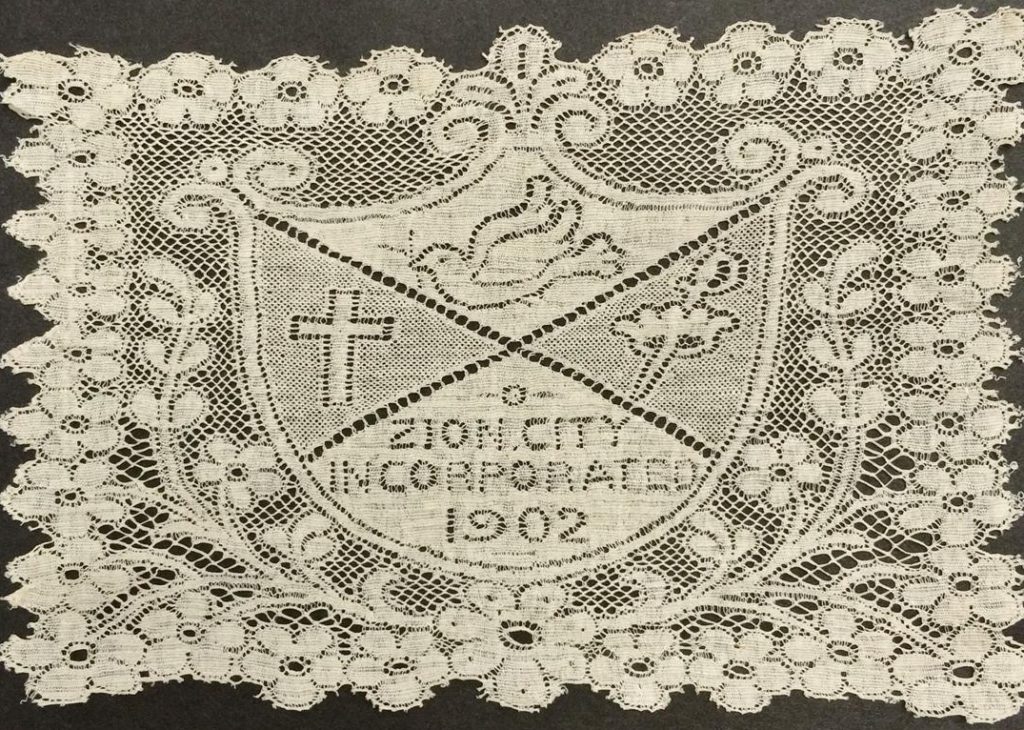
As we read in PART I, the Edwin Harley Snelling family moved to Zion City, Illinois in 1903. Their son, Arthur Hobart, was 16 years old when they arrived and upon the completion of his education from Zion City schools, he became employed at the Zion Lace Industries. The Zion Lace Factory, as it was commonly called, was unique to the United States. It was the first of the 21 industries, created to employ Zion City residents, to be built in the newly founded city. This article, appeared in the Fort Dearborn Magazine.
CHICAGO RIVALS TRADITIONAL LACE CENTERS OF EUROPE
“To start a new industry on an extensive scale, in a country where machinery and workmen were alike unknown, was the herculean feat consummated by John Alexander Dowie, an evangelist, the founder of Zion City, when he established these industries there. The machines and equipment of an entire mill in one of the old lace markets of Europe were not only imported by Dr. Dowie, but he also transported the entire force of skilled operatives, many of whom were the best trained in the traditional lace centers of both Calais and Nottingham.”
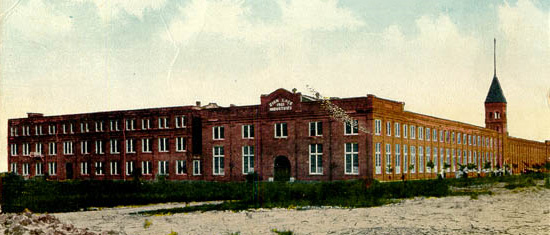

THE LACE
Hand-made lace has been around for hundreds of years and was, of course very, very time consuming to make. Therefore, only the very rich could afford to own clothing which was trimmed in fancy lace.
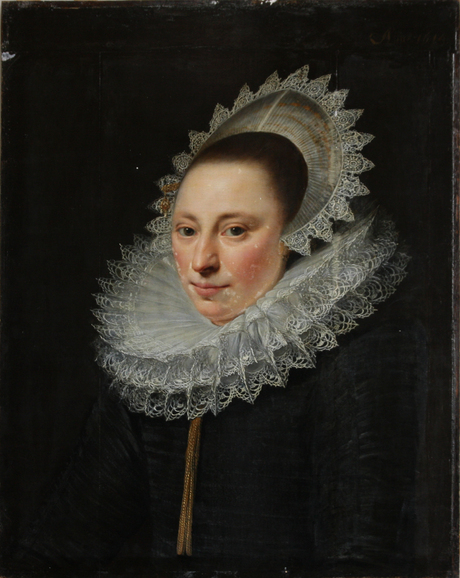

In 1809, the first machine to manufacture lace was created in Nottingham, England. (Yes, the same Nottingham where King Richard the Lionheart besieged and captured Nottingham Castle from Prince John and the Sheriff of Nottingham in 1194. Not sure if Robin Hood was there or not.) Then in 1813, lace maker, John Levers, greatly improved the manufacture of lace with his new Leavers Lace machine. Nottingham had become the lace-making capital of the world.
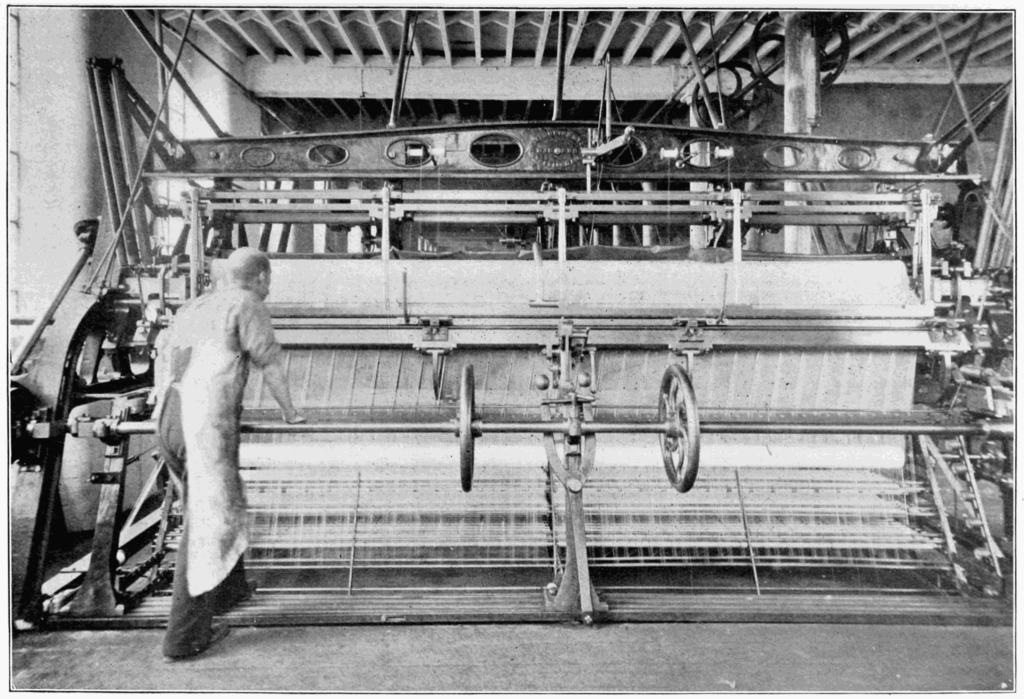
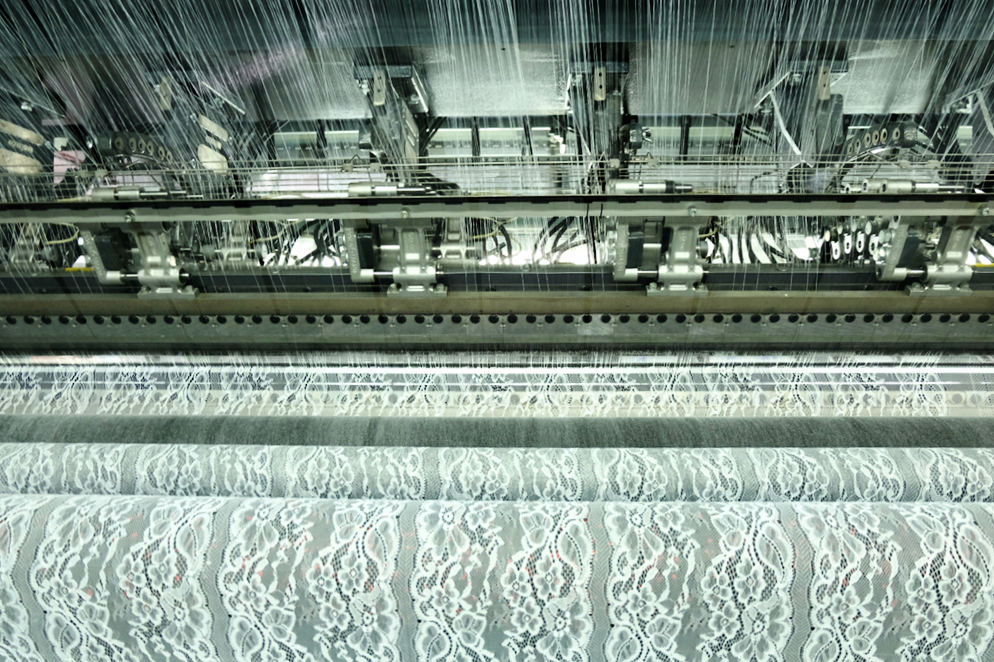
John Alex. Dowie became acquainted with Samuel Stevenson during a visit to England, when one of Mr. Stevenson’s family members received a healing. Dowie thought lace making would be a worthwhile industry for the coming city and Mr. Stevenson and his brothers agreed to sell their business to Dowie and move everything to America. The machines, the Stevensons and the workers arrived before the building was completed, but before long the factory was in full production.
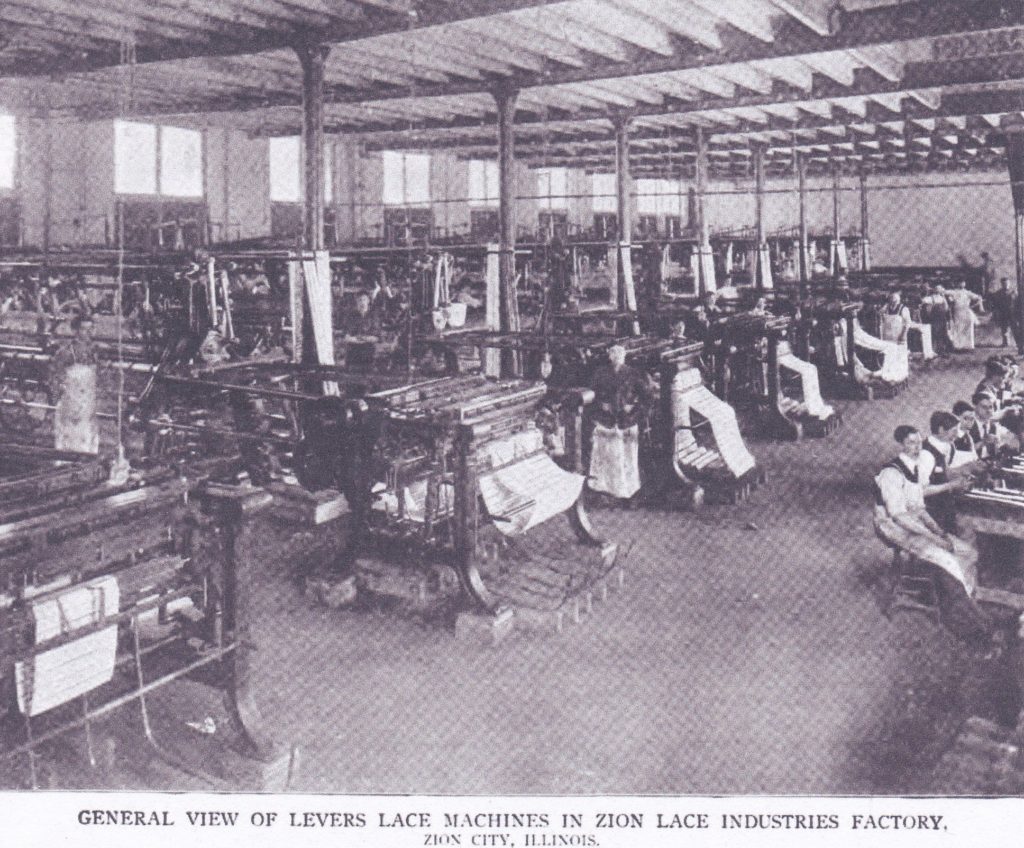
Lace making machines were very labor-intensive and required special skills and dexterity. There was generally about a three year apprenticeship required. Some of the job titles were, winders, beamers, twist-hands and threaders. I do not know which job my Grandfather, Arthur had during his time working there. The machines had 40,000 moving parts and used between 12,000 and 50,000 threads. In addition to operating the machines, there were many hand operations as well, such as stretching, clipping, bleaching, dressing, scalloping, cutting, inspecting, mending and folding.

The Zion City and temple site were dedicated in July of 1900 by Dowie and over 7,000 people. One year later, July 15, 1901 at the Feast of Tabernacles and the one year anniversary of the dedication, special commemorative lace made at the Zion Lace Factory was for sale to all who attended. This was the official Opening of the Gates to the new Zion City.
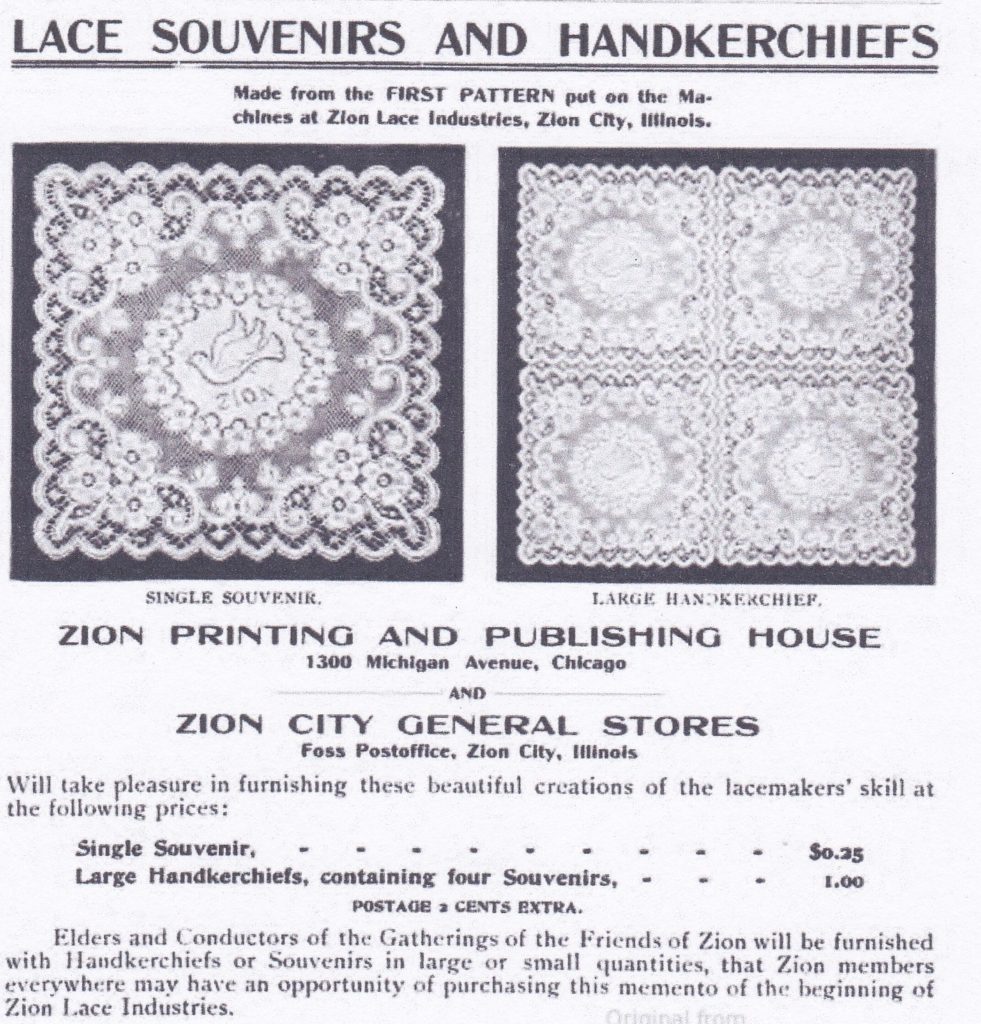
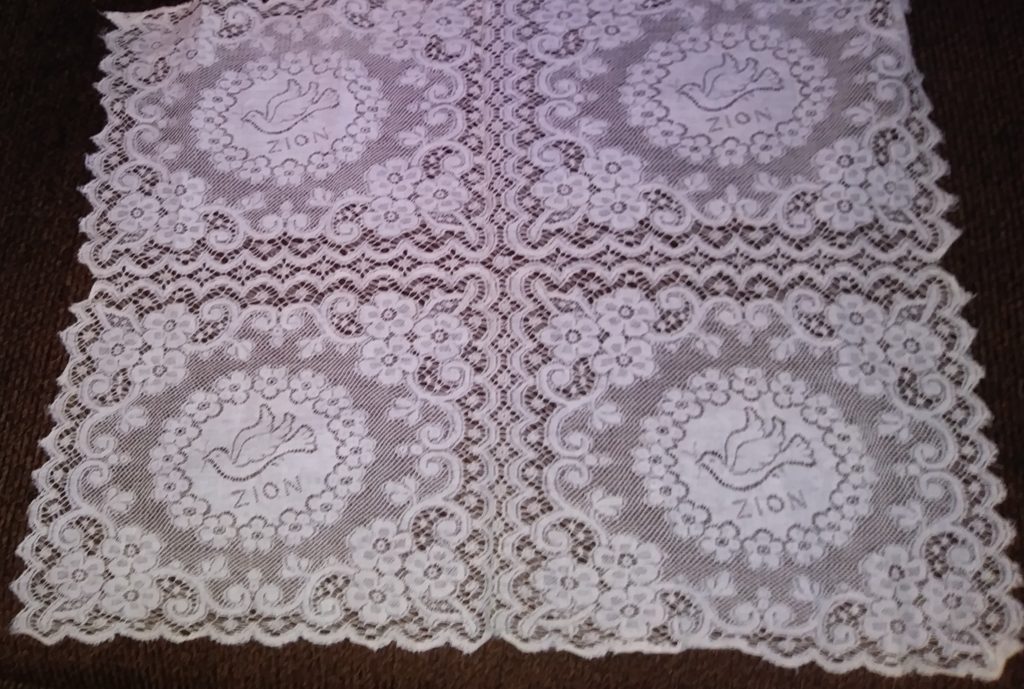
The Zion Lace Factory was a huge success. Buyers from around the world put in orders for lace of all kinds. More machines were ordered and more workers hired. Soon 18 lace making machines were operating for three shifts a day.
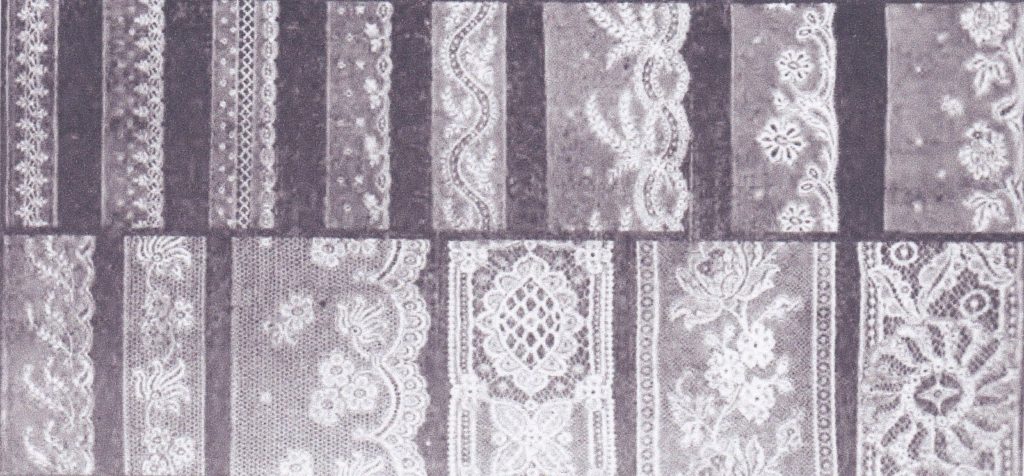
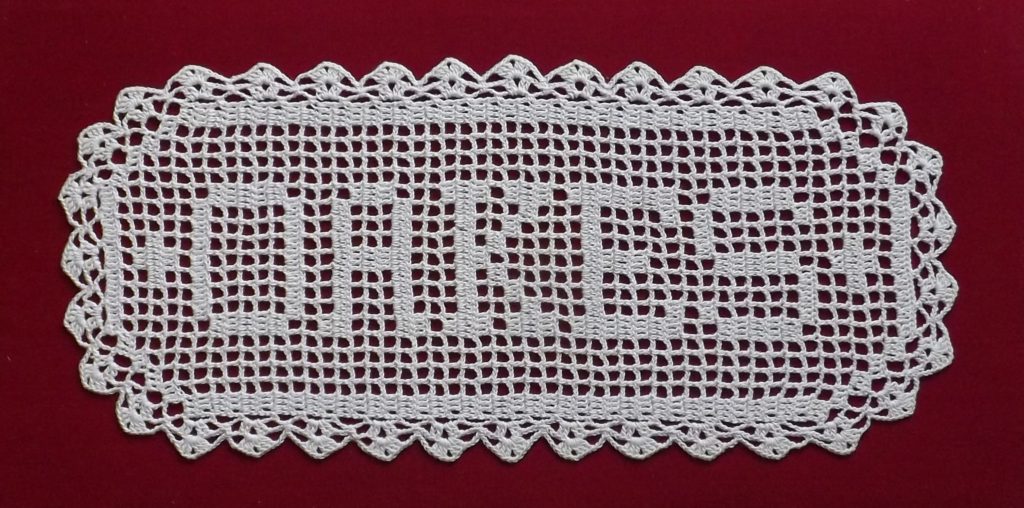
Zion lace was of the finest quality that money could buy. Lace curtains and lace tablecloths became very popular. In general, lace remained a favorite through the end of World War II, when consumer tastes and fashion changed. But for Zion lace, the end came much sooner. One reason for it’s demise, was the financial philosophy of Dowie’s city. All income from whatever source; industries, tithe, stores, land sales, etc. went into one big “pot.” The Lace Factory was the biggest money-maker for the city, but really had no personal profits. Other factors of over-spending, wasteful spending and general mismanagement of funds, also contributed to the city going bankrupted. Dowie’s stroke and later death in 1907 marked the end of the dream.
Everything in Zion City went into receivership, which means a chosen appointee sells the assets in order to pay off the debts. Therefore, the Zion Lace Factory was put up for sale in 1907 and since it was, as an individual entity, such a great financial success, it was quickly purchased by the Marshall Field Company, headquartered in Chicago. (Marshall Fields eventually stopped making lace in 1952.) Dowie’s successor was able to buy back many things, but the whole concept of a church-owned and operated city was over.
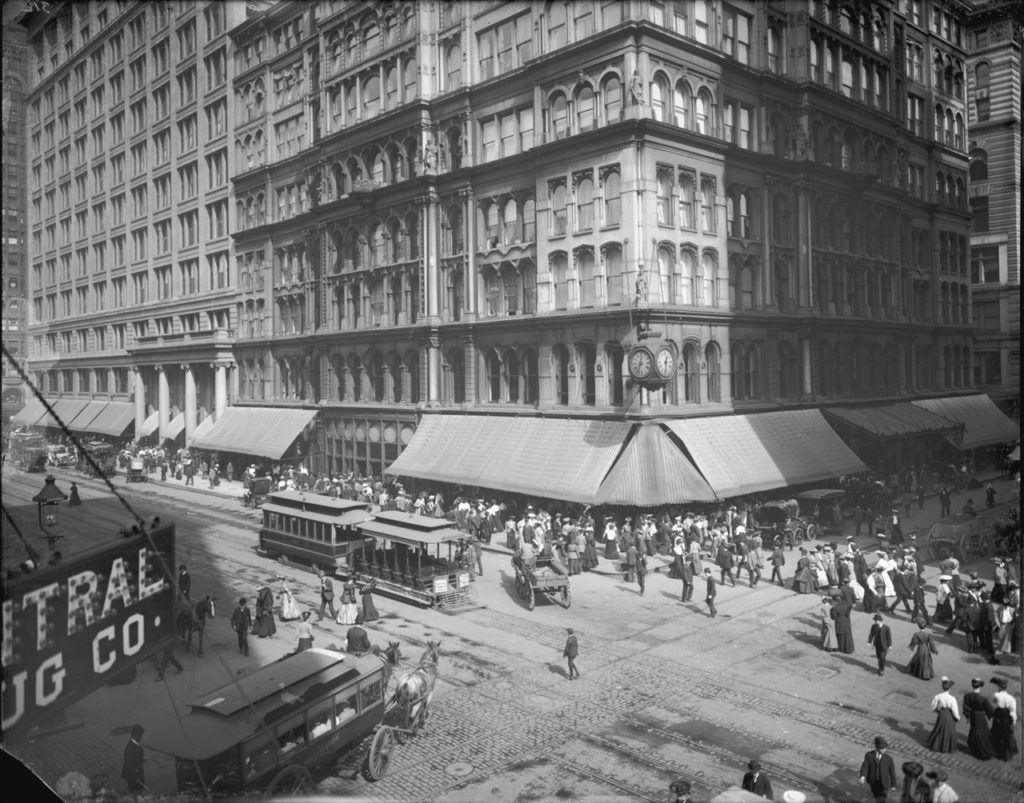
THE VACCINE
Marshall Fields basically kept everything the same at the Lace Factory, where, as we remember, the employees were highly skilled craftsmen. But the new owners insisted on one thing; all the employees would have to get vaccinated for smallpox. Still fresh in everyone’s mind was the smallpox epidemic that had swept across the United States from coast to coast beginning in 1898 and ending about 1904. This posed a dilemma for the Zion men who followed Dowie’s teaching against medicine and vaccines.
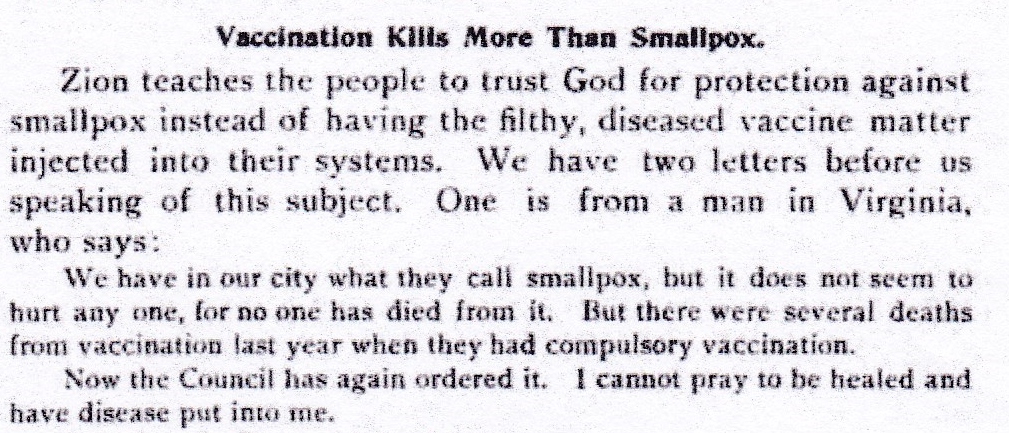
The smallpox vaccine was made from diseased cows who had cowpox and many people, not just Zionites, had a problem with that. Lace employee, Arthur H. Snelling, was one of several who refused to be vaccinated, and so was now unemployed.
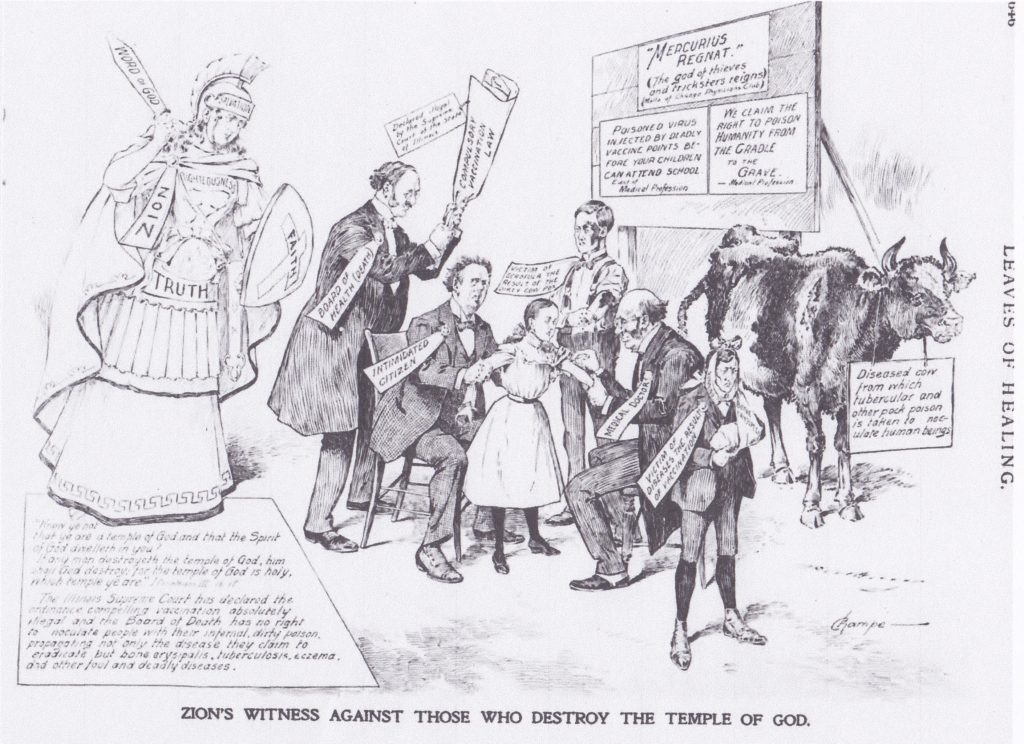
The following article appeared in the book, “A Standard History of Lorain County Ohio” published in 1916 by Lewis Publishing Company.
The American Lace Manufacturing Company “In 1907, soon after the rupture at Zion City and the discontinuance of the lace works at that place, The American Lace Manufacturing Company was organized at Elyria (Ohio) and a small plant put in operation under the management of Dowie’s former superintendent. The industry has so nourished that it’s plant has been doubled in capacity, and it employs some 250 people, half of which are women and girls. The company’s specialty is the making of fine lace used in dress goods.”
Referring back to FAMILY HISTORY: PART I, Samantha Bullard moved her family to Zion City in 1903, a couple of years after the death of her husband. I do not know how she supported herself, but sons Emerson (Em) and Wilber (Wib) were 28 and 22 and probably had jobs and lived at home with the three younger ones, Gertrude (Gertie), Franklin (Frank) and Harold (Harry), who were 13, 10 and 7. We do know that in 1907, they became aware of the new Lace Factory in Elyria, Ohio, as did many of the lace workers who refused to be vaccinated. The men moved to Elyria to work at the factory. So, she decided to sell her house in Zion City and move to Elyria, too. Em and Wib were now out on their own and Samantha and children Gertie, Frank and Harry, now 17, 14 and 11, opened a boarding house in Elyria where the Zion men could live.
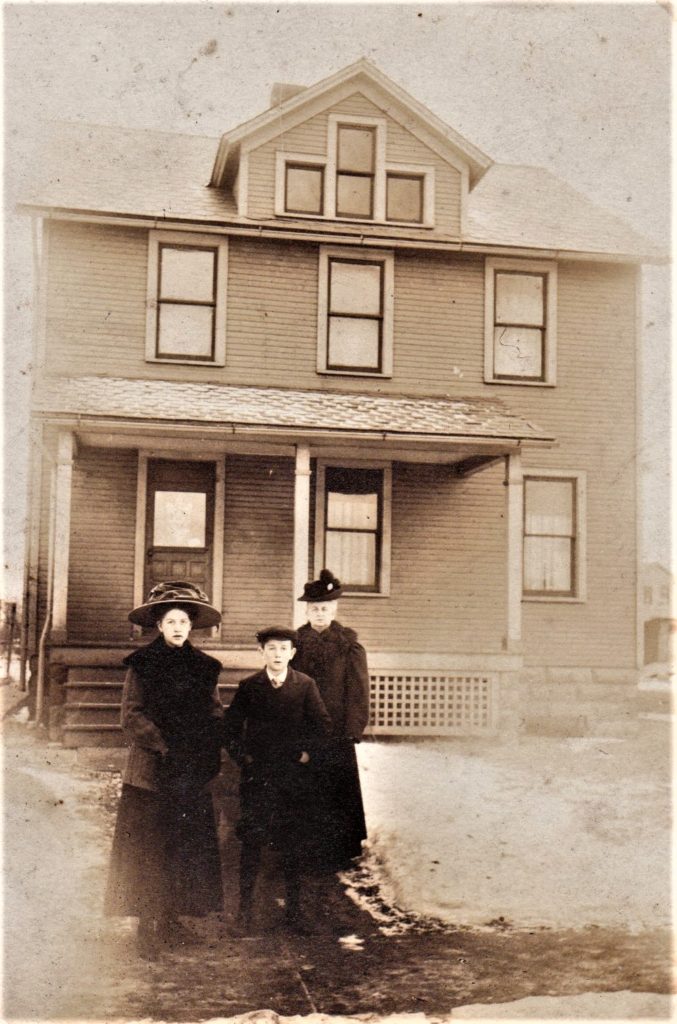

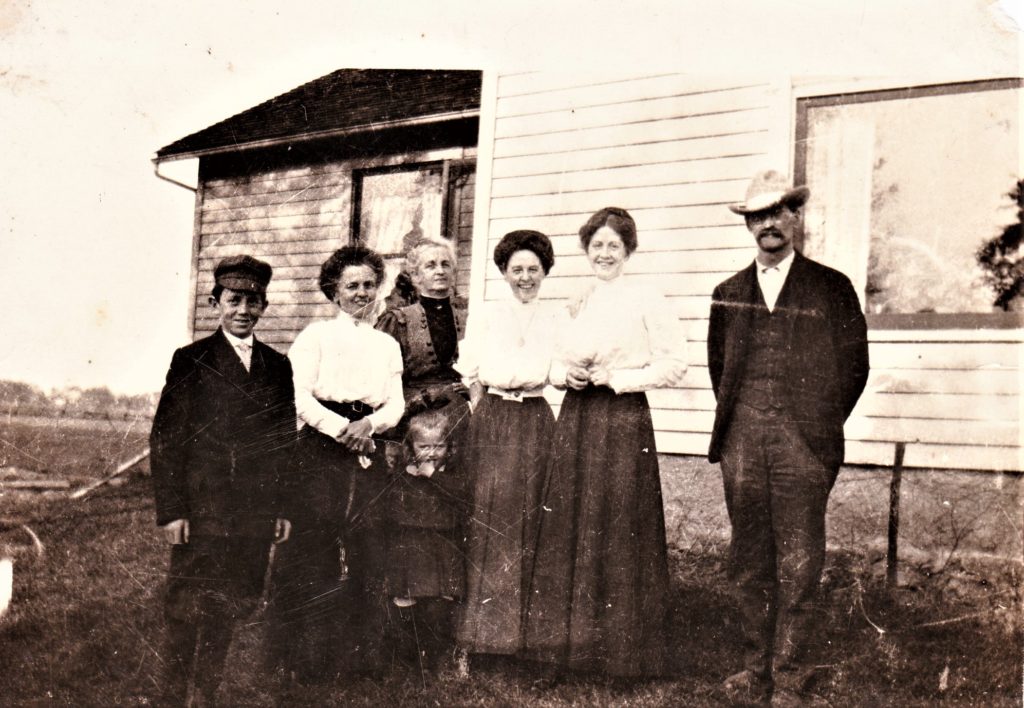
Gertie spent some of her free time at the nearby Maddock farm, where her good friend and classmate, Elnora Maddock lived with her family. Elnora married Clarence Oster about 1912 and they had two daughters, Virginia May born in 1914 and Velma Fern born in 1923. Velma never married, but Virginia married George Taylor and also had two daughters, Shirley and Karen. Mr. Oster died in 1940 and Mr. Taylor in 1947. My parents (who were about the same age as Virginia) and our family visited the Osters in 1953 and again in 1960. I remember they lived in the country, perhaps at the original Maddock farm. And I remember that Mrs. Oster used a cane and had a very real-looking wooden leg. Their family visited us in Zion a few times and Christmas cards and letters were faithfully exchanged over the years. I never really understood how we knew these people until many, many years later, but I find it quite fascinating that this friendship between these two girls, Elnora and Gertie, began a long-distance, family friendship that lasted for three generations.
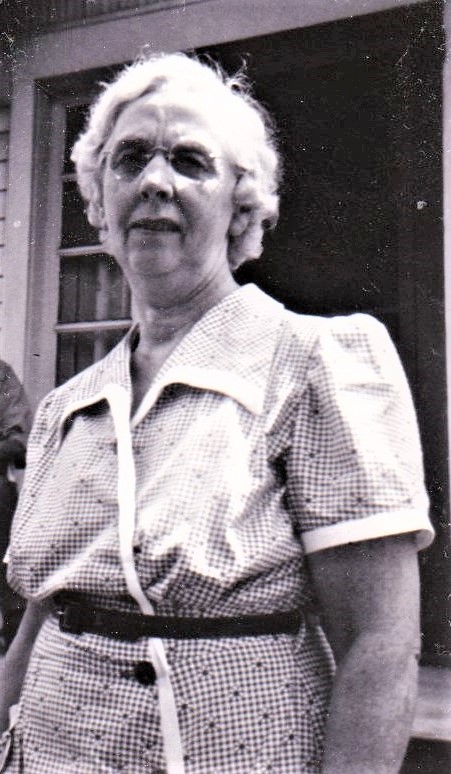
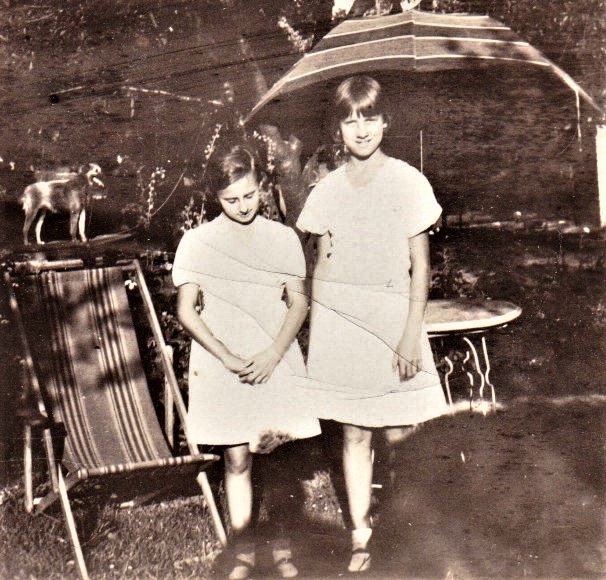
THE ROMANCE
Of course, dashing, 20 year old Arthur Snelling, was among the group of men who lived in the boarding house. With several other former Zion tenants, the competition may have been tough with only one eligible female in the house, but within two years after the move to Elyria, Arthur Snelling and Gertrude Bullard decided to get married. Had it not been for the Lace Factory sale, the vaccine issue and them living in the same house in Ohio, these two may never have had the opportunity to get to know each other.
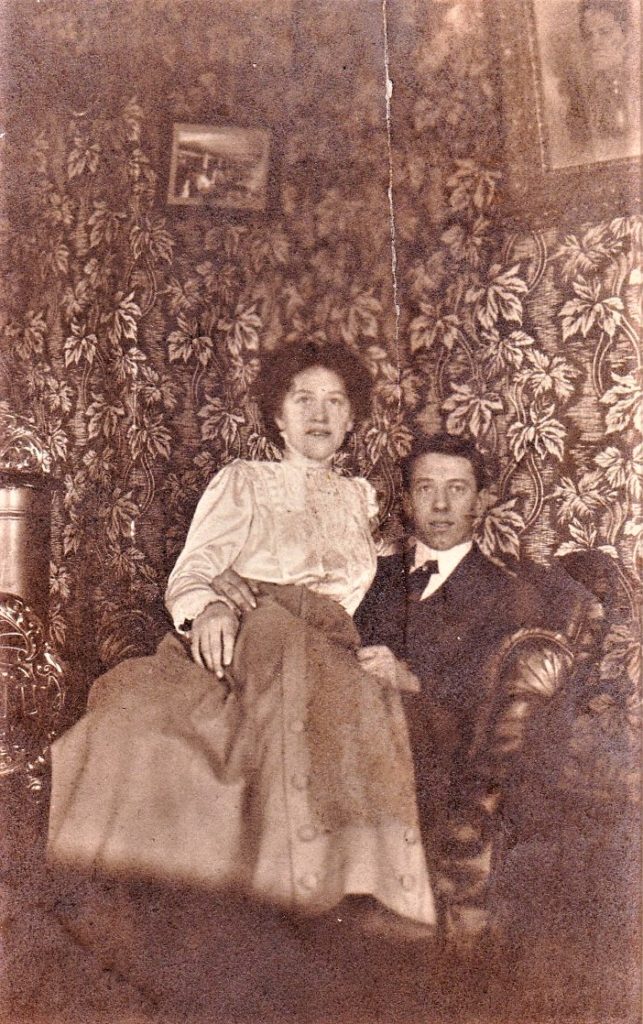
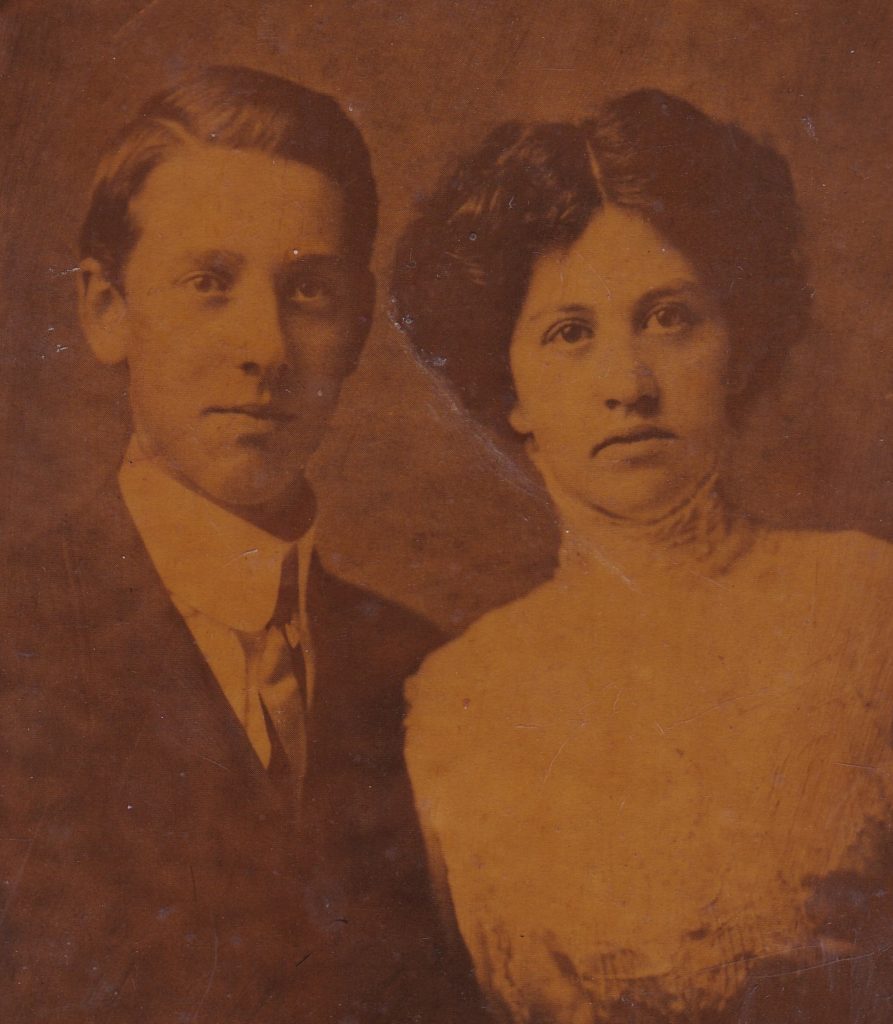
Arthur and Gertie and Gertie’s family traveled back to Zion City, so the wedding could be performed by Wilber Glenn Voliva, who replaced Dowie as the leader of the church. They were joined together in marriage on August 28, 1909, three days after her 19th birthday, and then returned to Elyria. They celebrated their first wedding anniversary there, but in October of 1910, they left Elyria for good, returning to Zion for the birth of their first child, James Harold (called Jamie and later Jim) on the 14th with the assistance of Miss Ellen Lloyd, Zion’s midwife.
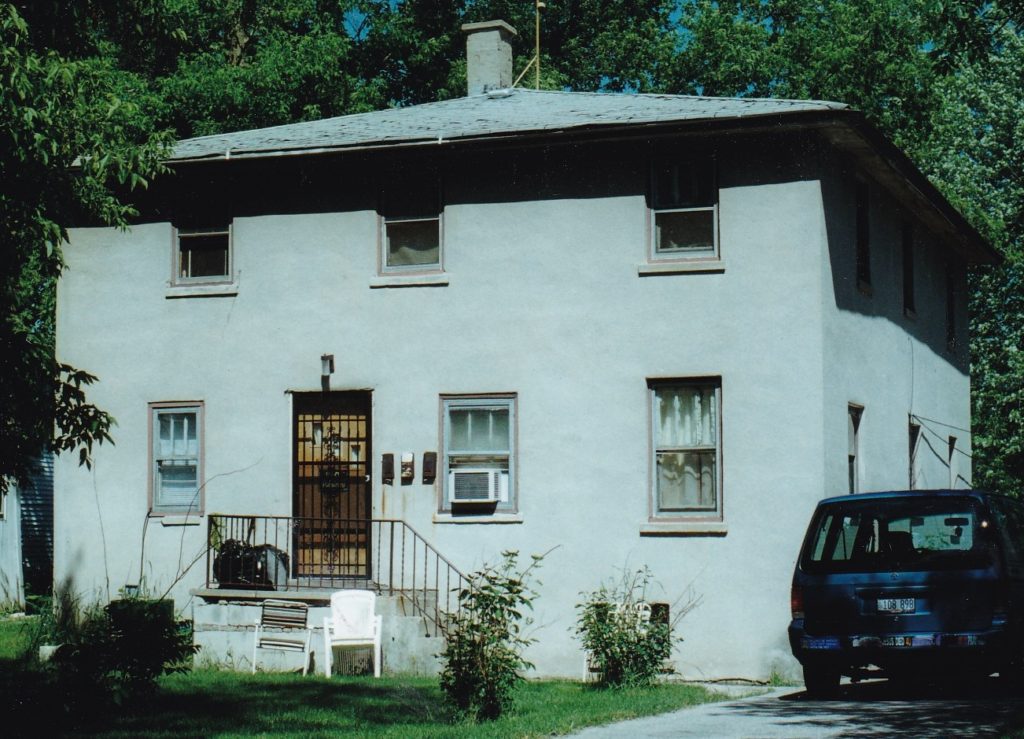
Samantha Bullard also left Elyria, Ohio and returned alone to the same area in Ontario, Canada that she came from, where she died in Minto in 1911. 14 year old Harry lived with his sister, Gertie and Arthur for the next few years. Wilber married Anna Wold and moved to Norwalk, Connecticut in 1912. Also in 1912, Gertie gave birth to daughter Elsie Winona.
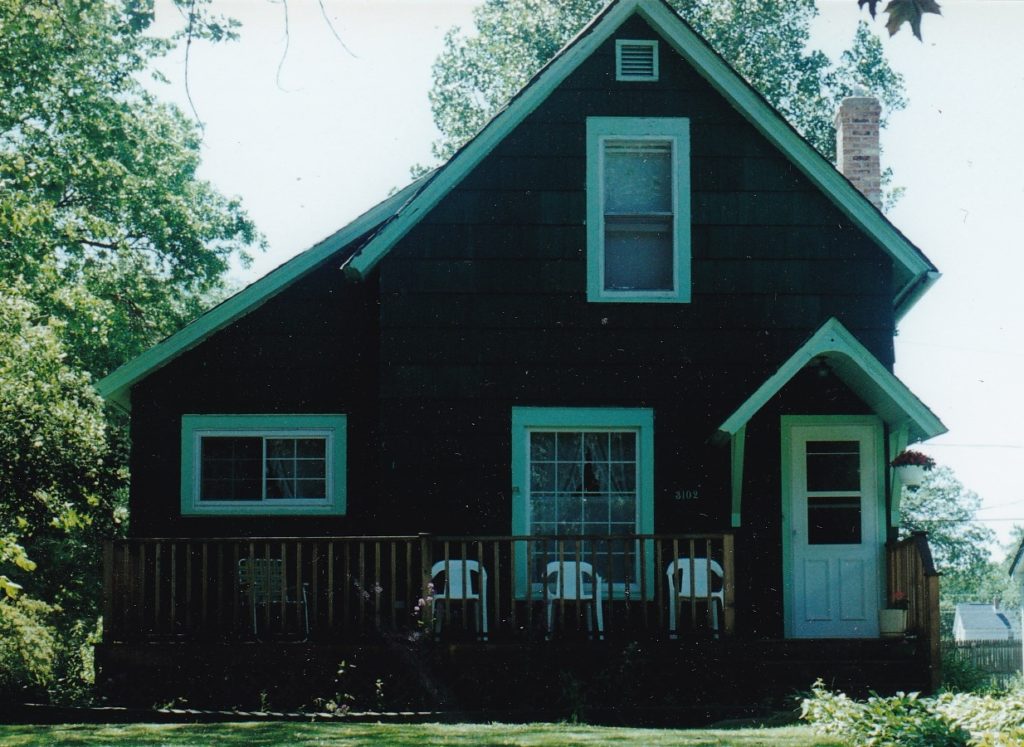
My Mom, Ruth Elizabeth, was born in the house pictured above, in the alcove room on the left on July 19, 1915. The Snellings moved again and David Arthur was born in 1917 in the house pictured below. David died at age 13 months during the Great Flu Epidemic of 1918.
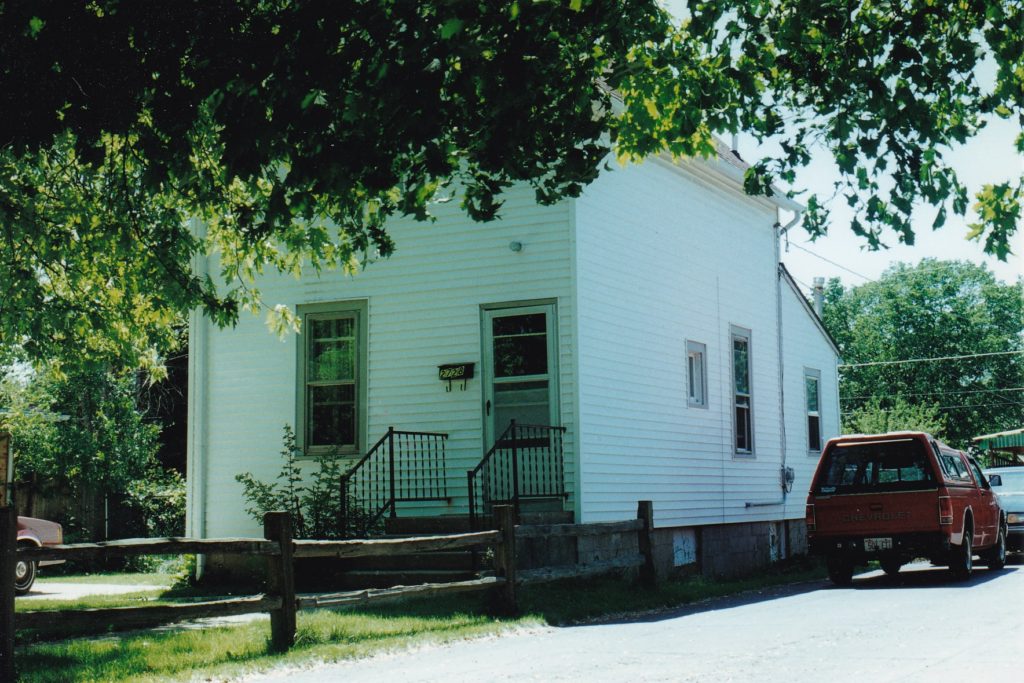
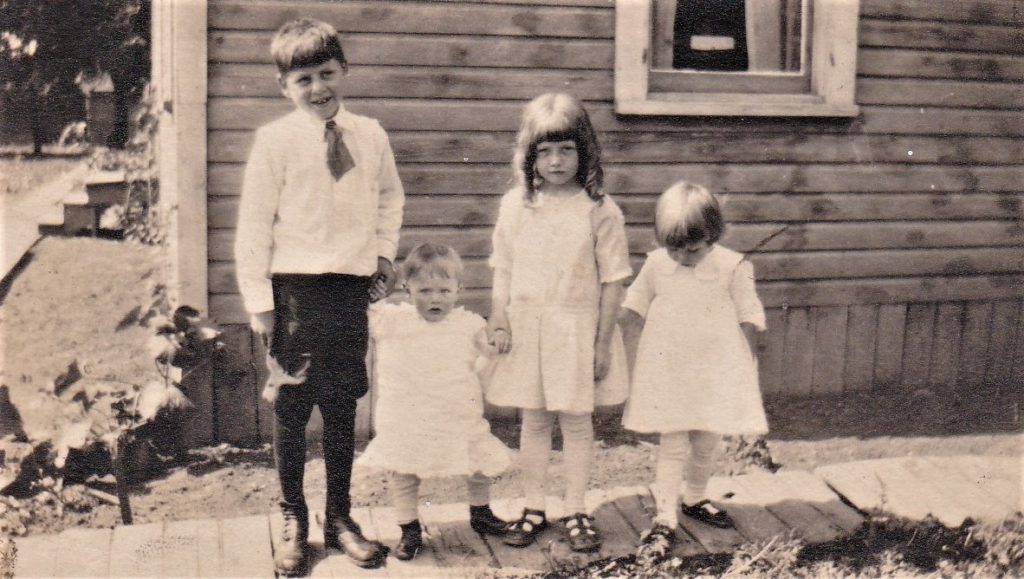
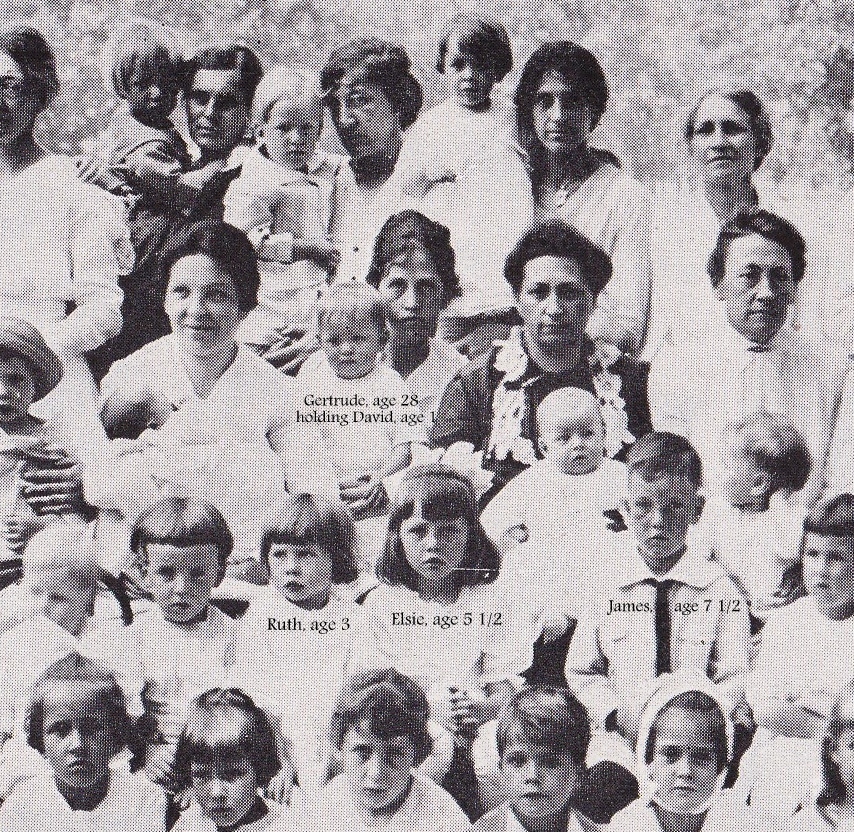
This image above, taken in July 1918, is part of a 6 1/2″ x 49″ photograph of Miss Ellen Lloyd and about 500 mothers and their children whom she attended to as Zion City’s Midwife. David and Gertie came down with the flu in September and David died on October 20th. David’s funeral was delayed while they waited to see if Gertie was going to survive. She did and gave birth to Mark Hobart in 1919, Rachel Eunice in 1921 and Arthur Franklin in 1924.
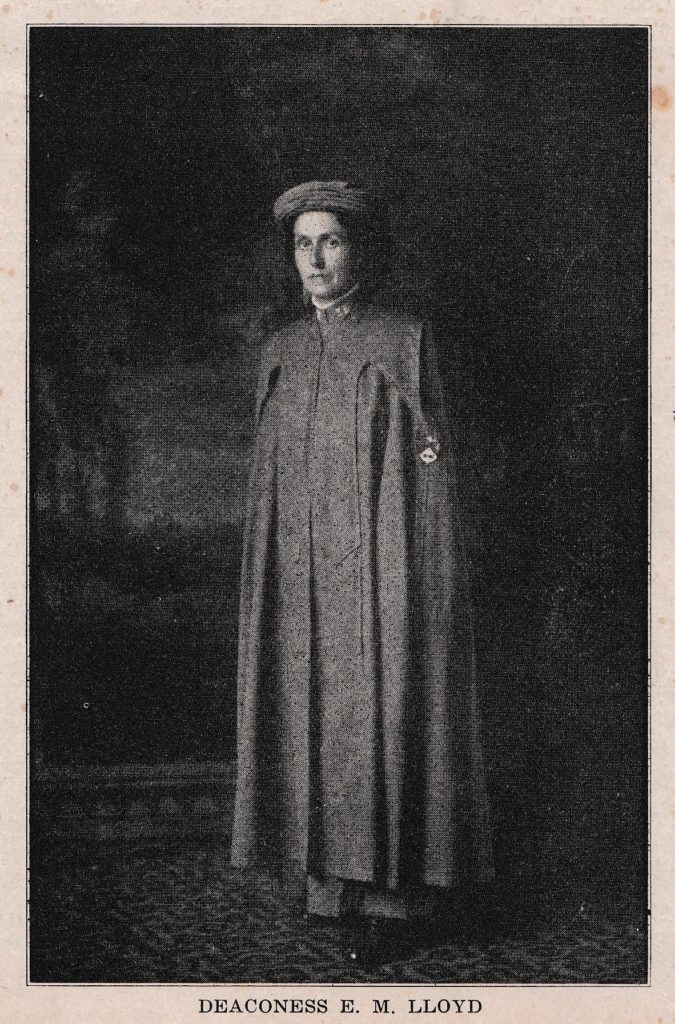
Miss Ellen M. Lloyd was born in England and came to Zion City in 1906 to be a midwife. By 1918, she had delivered 515 babies and only 3 mothers died in childbirth. (She had a .5 % maternal mortality rate compared to a National rate of 15%.) She was Zion’s Midwife from 1906 until 1966 and during those 60 years she delivered over 2,500 babies.
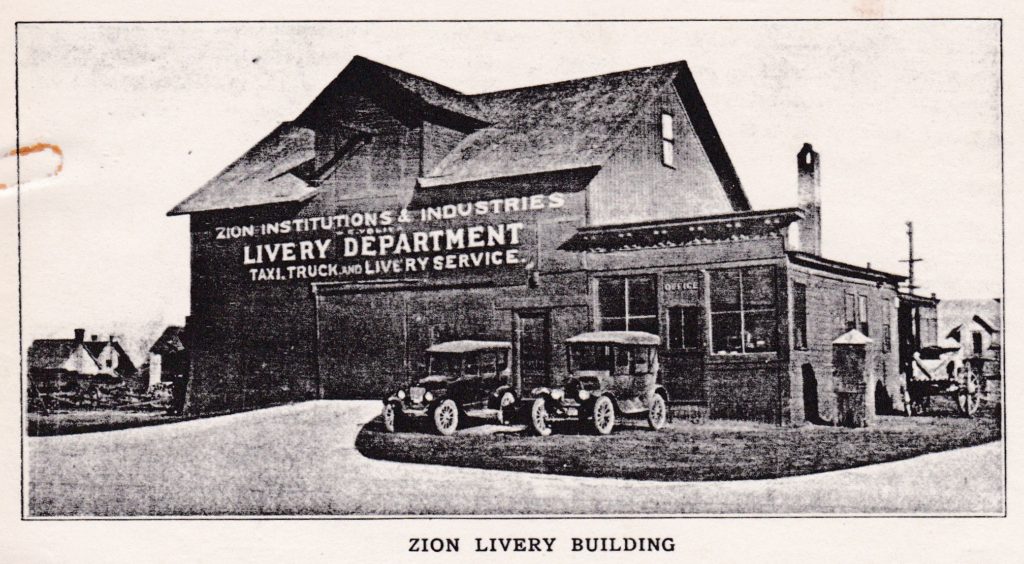
Upon returning to Zion City, Arthur was employed at the Zion Livery Department of Zion Industries and worked his way up to the position of Manager in 1922. My Mom told me a story about a Halloween prank she remembered as a young girl. Some kids emptied an outhouse into one of the Livery Dept. taxi cabs. Yuk! I do not know how they could ever have gotten that cleaned out well enough for people to ride in it again. It was during his time at the Livery Dept. that Arthur was involved in digging out a lagoon in Shiloh Park using mule teams.
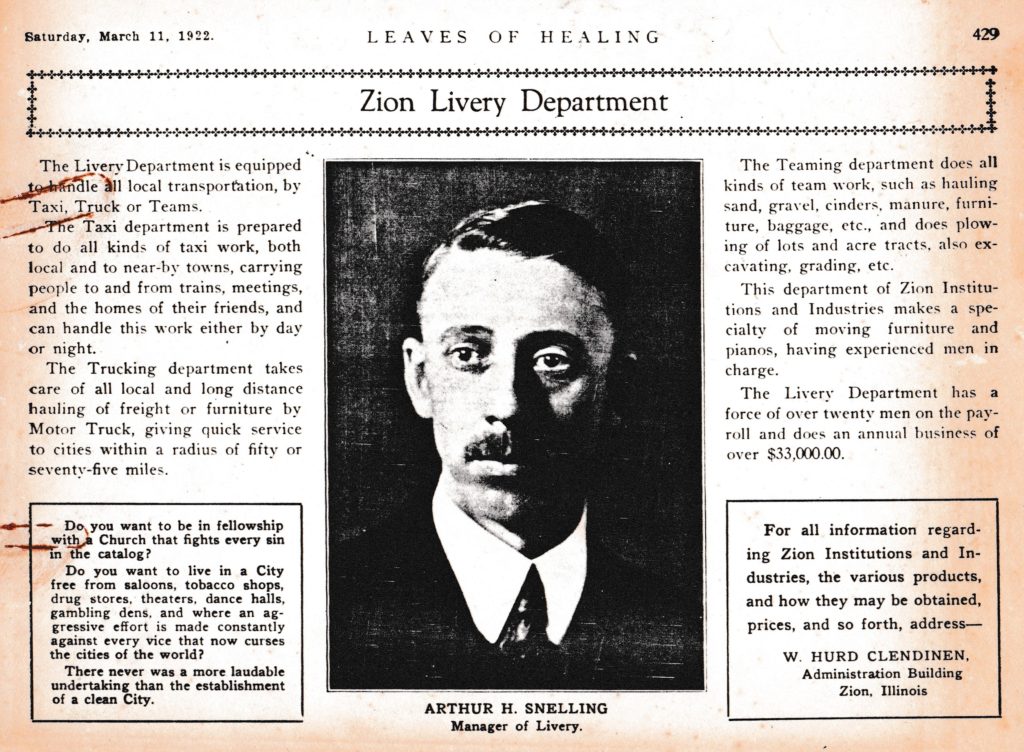


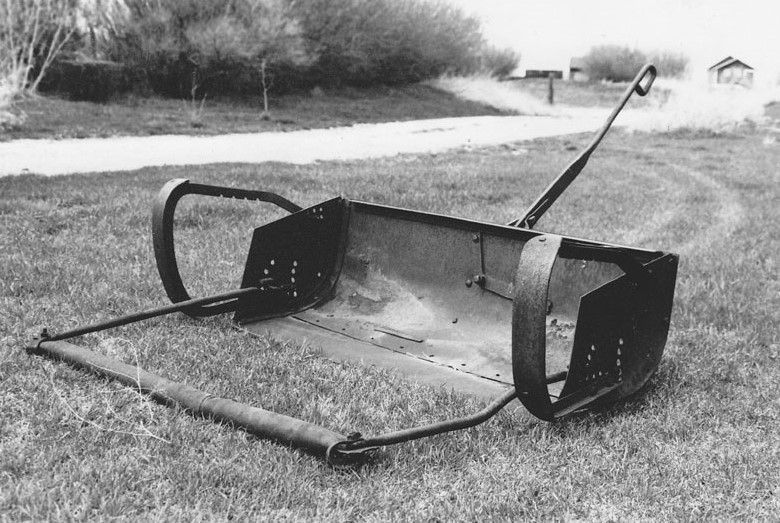
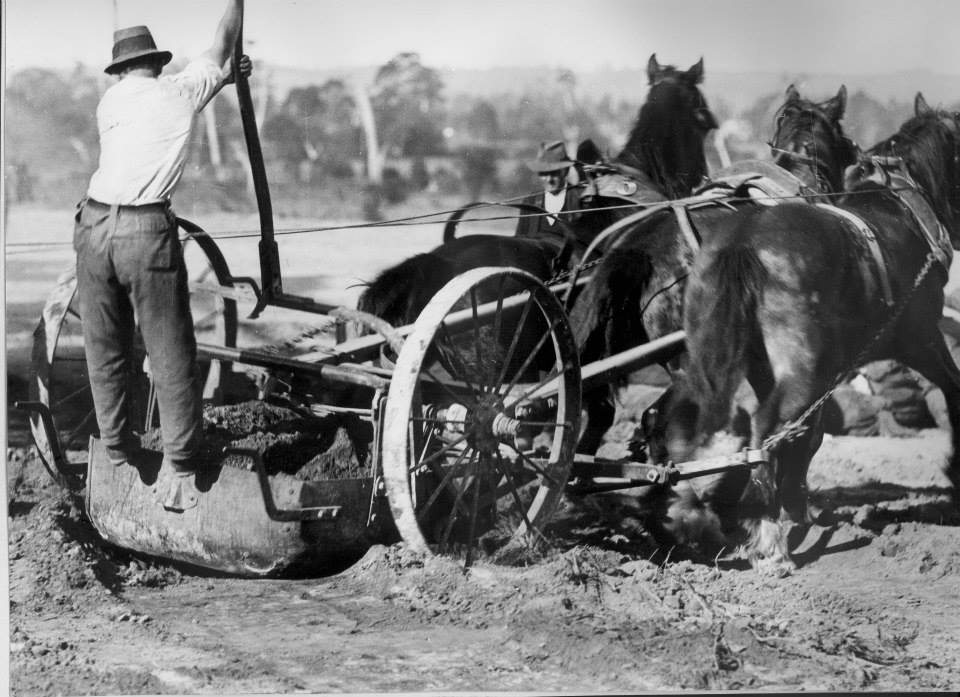
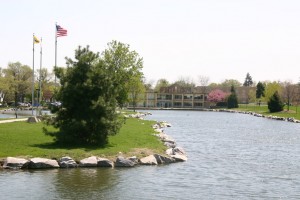
Arthur, Gertie and the six little Snellings moved again and their last child, Byron Craven (Bing), was born in the house shown below, in 1928.
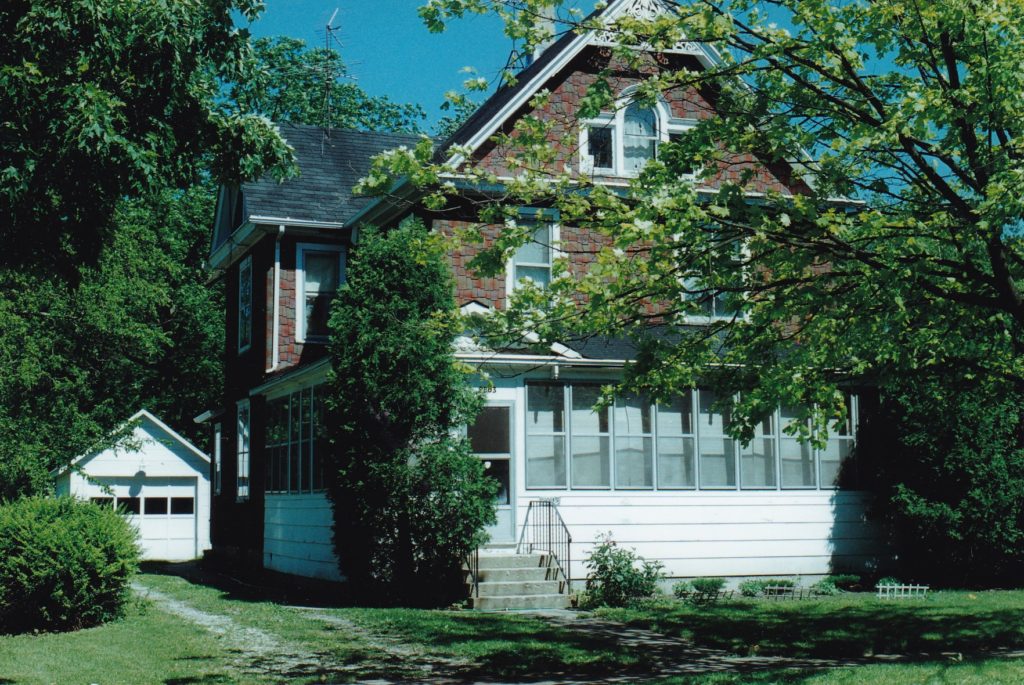
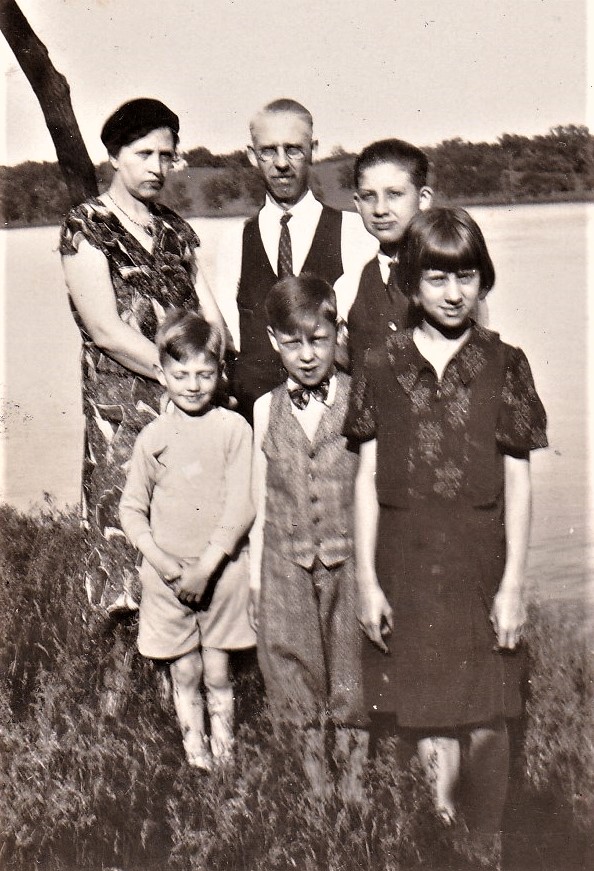
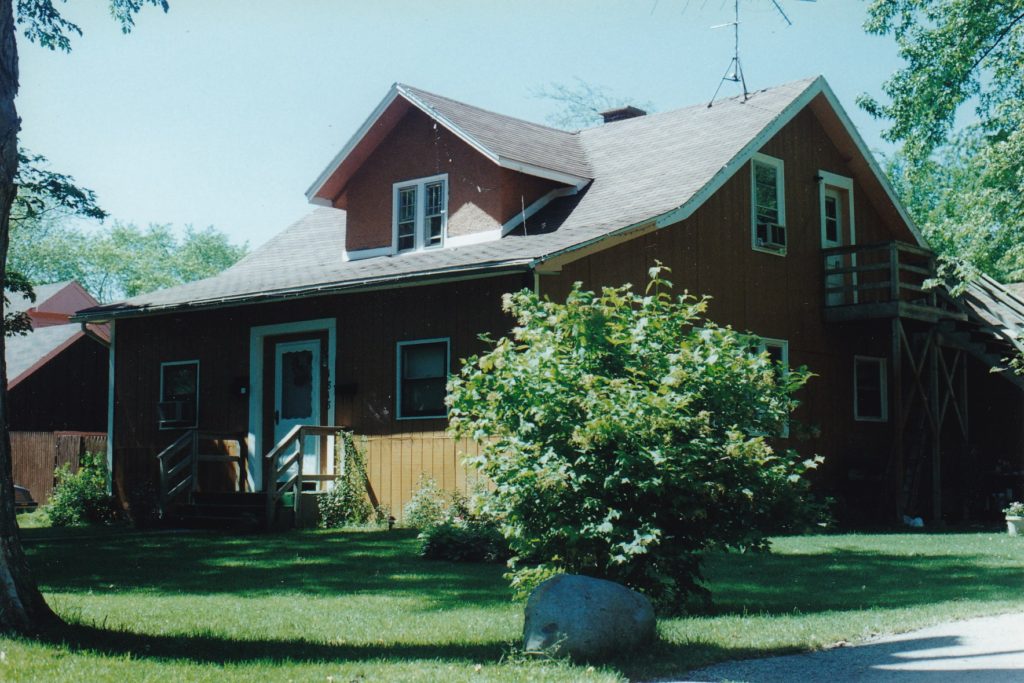
The family of nine moved to this house above in 1929 and stayed here until 1937. Major changes took place in their lives during their stay here. The Stock Market Crash in 1929 and the Great Depression that followed, affected everyone in the country in one way or another. Eldest son, James married Darthea Joy Williams in 1930. Eldest daughter Elsie married Albert John Ower (from Owerville) in 1933 and they lived across the street. Next, they had a measles outbreak in their home. I do not recall who came down with the measles first, but in those days, your home would be quarantined. A sign, “MEASLES” was put on the door and whoever was in had to stay in and whoever was out had to stay out. My Mom was out, so she went across the street and stayed with Elsie and Al for about two weeks until the quarantine was lifted. 1937 was a particularly difficult year for the Snelling family. Arthur lost his job, his house and his wife of 28 years. My Mom was busy with wedding plans when her mother, Gertrude, aged 47, died on October 1st. Two weeks later, on October 8th, Ruth married Harry Marshall Oakes.
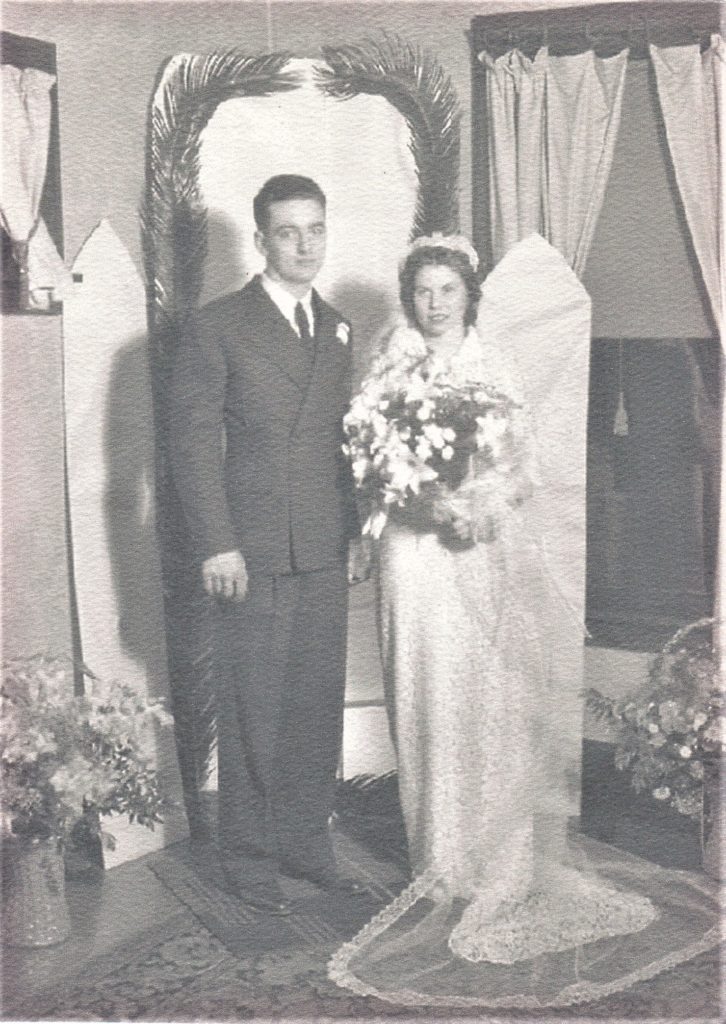
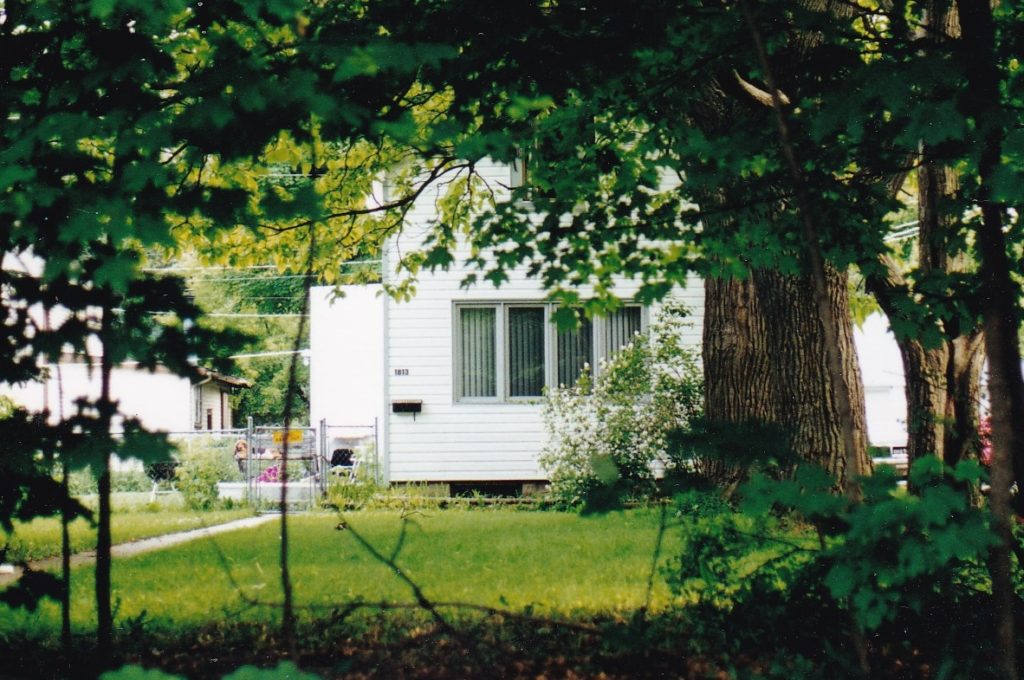
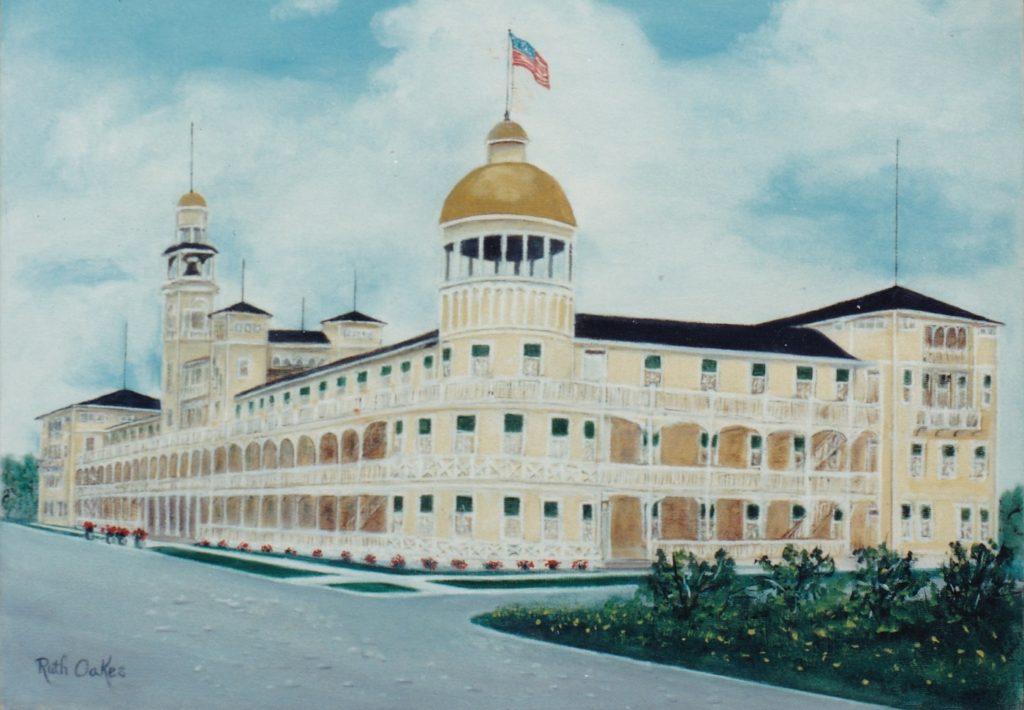
In 1938, Arthur and his unmarried children, Rachel, Mark, Arthur (Artie) and Byron (Bing), moved into third floor rooms in the Zion Hotel. The family’s player piano was a heavy beast and there was no desire to try and haul it up three flights of stairs, so it became a “wedding present” for Ruth and Harry. The Cable Piano Company of Chicago, who made this piano, was one of the largest and most successful piano manufacturer in American history. We enjoyed playing it or letting it play by itself for many years in my parent’s basement. I say “letting it play by itself,” but really it was a lot of work pumping the bellows with foot pedals to get it to “play by itself.” At one point, my Uncle Mark drilled a hole into it and hooked up a vacuum cleaner to get out of using the pedals, but that never really worked very well.
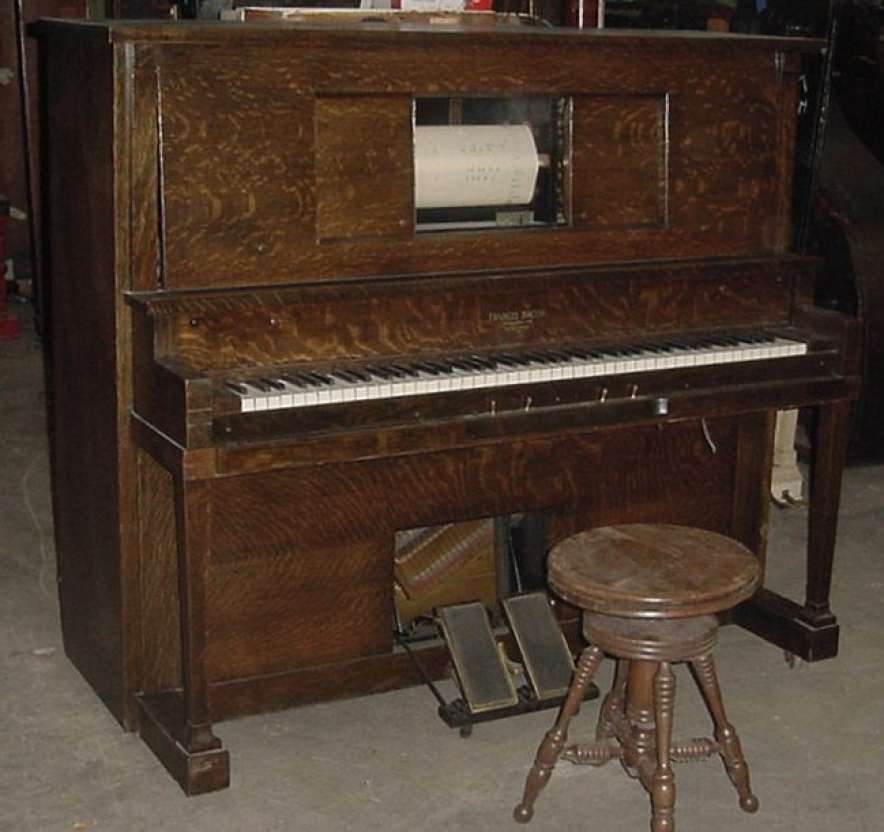
Over the years, it developed several leaks, so I took it apart and patched the bellows and replaced the deteriorating rubber hoses (one for each of the 88 keys and several other larger ones.) In 1986, I moved it (with help, of course) into my house a half block away by rolling it down the street. When I moved to Tennessee in 1998, we moved it by truck (too far to roll it this time) into my niece’s house across town, where it stayed until she moved to Panama in 2013.
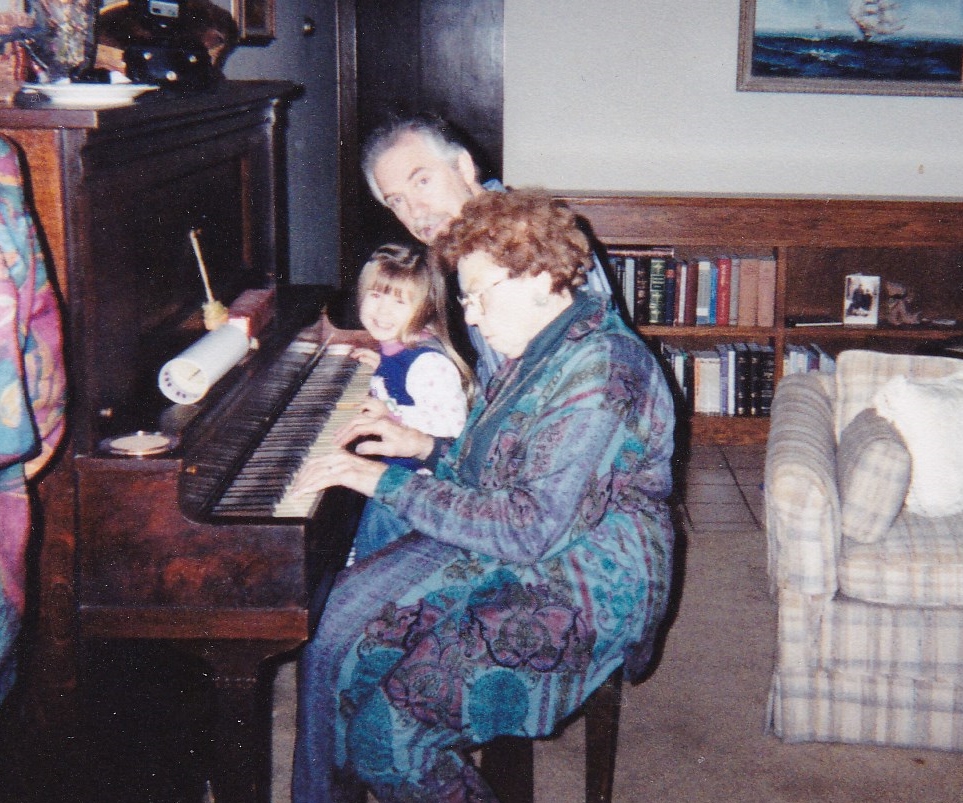
In 1939, Arthur married Ruth Gottchalk. Grandma Ruth was born in India on July 4, 1897 because her parents were missionaries there. The two of them, along with Artie and Bing, moved to Ft. Lauderdale, Florida. Twenty year old Mark stayed behind and lived with Jim and Joy and 8 year old son Jimmy and eighteen year old Rachel moved in with Elsie and Al and their two kids, Jackie, age 4 and Lynda, age 1. It was, also in this year that Jim and Joy, sadly had to bury their twin girls, Janet and Jayne, who only lived a very short time after their birth.
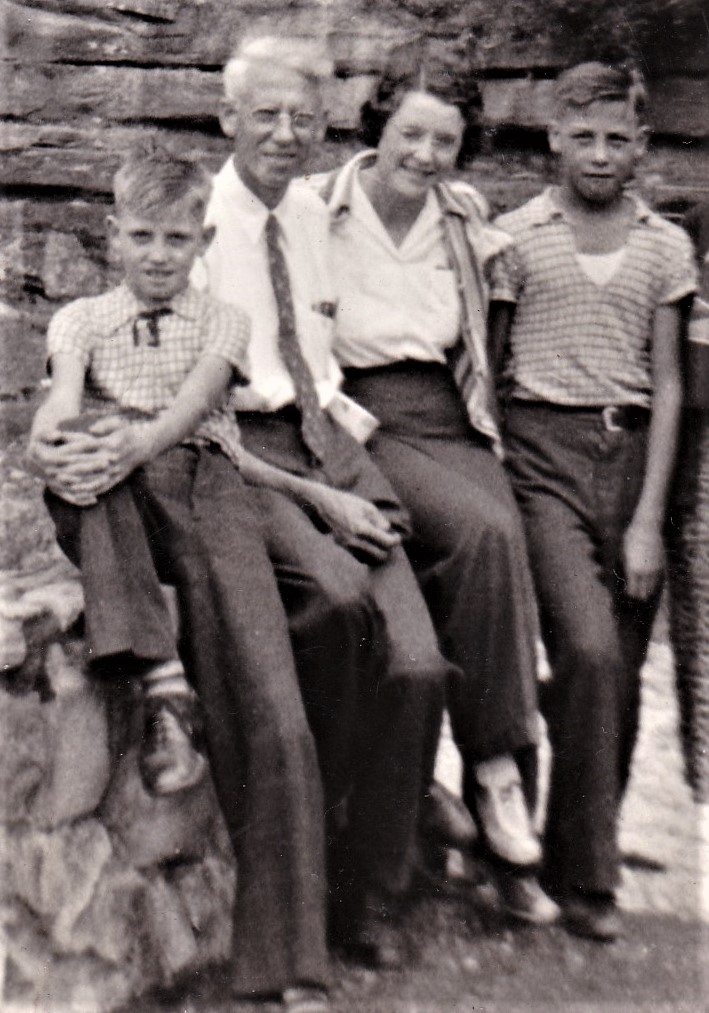
The 1940’s brought about several changes: World War II, Rachel got married to Bill Alshouse, Mark married Evelyn Westphal (and later, Karlene Lehman) and Elsie and Al had three more children; Dennis, Kathy and Alan. By 1947, Elsie and Al made the move to California to join his brothers in business and son, Terry was born shortly thereafter. Bing would eventually end up in CA also and marry Elizabeth (Betty) Witte. Arthur and Ruth joined the group on the west coast around 1960. Artie chose to stay in Florida and married Elizabeth (Libby). Arthur, aged 95 and Ruth, 85 had been married for 44 years when they both passed away in 1983.
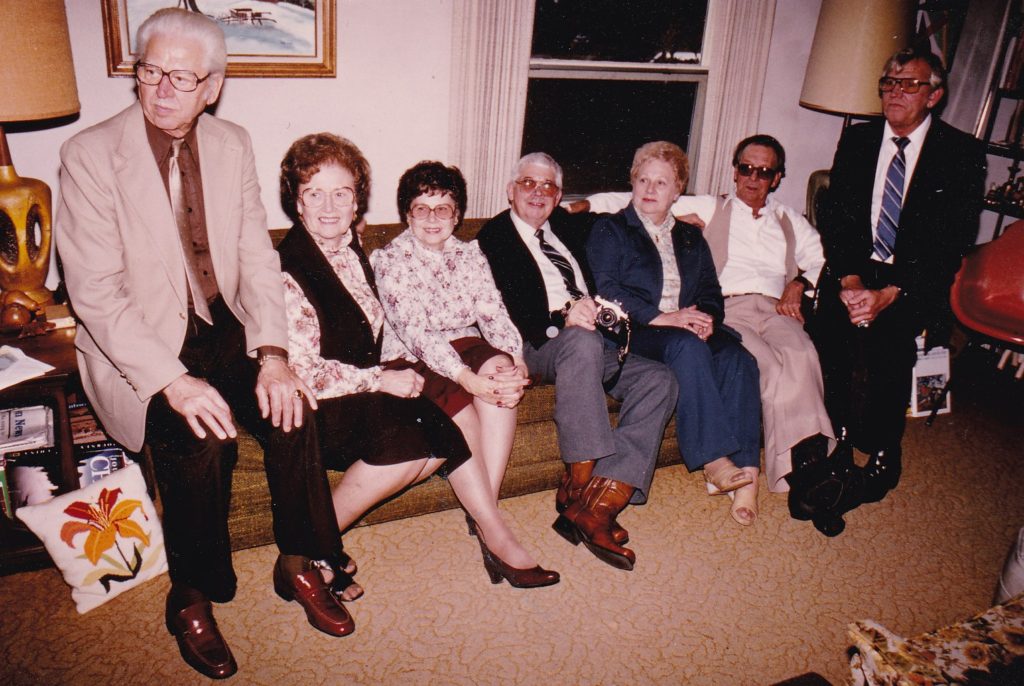
And so now you know the story of how Lace+Vaccines=Romance. But that is only the story of the Snellings and the Bullards. Don’t miss FAMILY HISTORY: PART III for the rest of the story!
Had lots of fun with the player piano. Learned a number of World War II songs like “Coming in on a wing and a pray” and “Johnny got a Zero”. Also the “Rustle of Spring” and “Somewhere over a rainbow”.